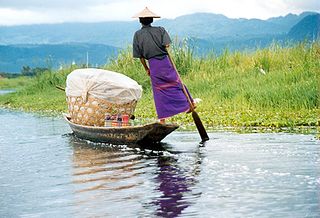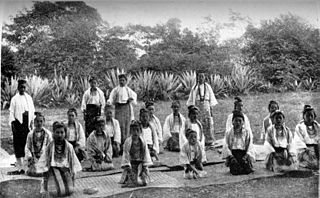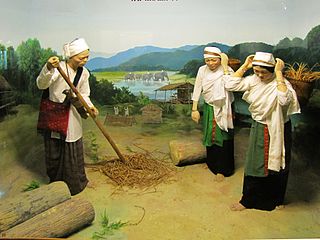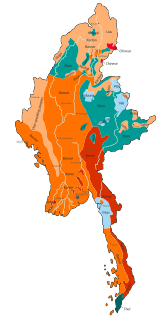| Intha | |
|---|---|
| Region | Inle Lake |
| Ethnicity | Intha |
Native speakers | 90,000 (2000) [1] |
| Language codes | |
| ISO 639-3 | int |
| Glottolog | inth1238 [2] |
The Intha dialect of Burmese is spoken by the Intha people, a group of Bamar descendants who migrated to Inle Lake in Shan State. The dialect is spoken by 90,000. [3] The Intha dialect is characterized by a retention of the /-l-/ medial (for the following consonant clusters: /kl- kʰl- pl- pʰl- ml- hml-/). Examples include:

The Burmese language is the Sino-Tibetan language spoken in Myanmar where it is an official language and the language of the Bamar people, the country's principal ethnic group. Although the Constitution of Myanmar officially recognizes the English name of the language as the Myanmar language, most English speakers continue to refer to the language as Burmese, after Burma, the older name for Myanmar. In 2007, it was spoken as a first language by 33 million, primarily the Bamar (Burman) people and related ethnic groups, and as a second language by 10 million, particularly ethnic minorities in Myanmar and neighboring countries.

The Intha are members of a Tibeto-Burman ethnic group living around Inle Lake. They speak an archaic dialect of Burmese and are believed to have come from the Dawei area. They often live on Inle Lake and support themselves through the tending of vegetable farms on floating gardens. Also, the Intha are known for their leg-rowing techniques and are traditionally Buddhists.

Inle Lake, a freshwater lake located in the Nyaungshwe Township of Taunggyi District of Shan State, part of Shan Hills in Myanmar (Burma). It is the second largest lake in Myanmar with an estimated surface area of 44.9 square miles (116 km2), and one of the highest at an elevation of 2,900 feet (880 m). During the dry season, the average water depth is 7 feet (2.1 m), with the deepest point being 12 feet (3.7 m), but during the rainy season this can increase by 5 feet (1.5 m).
- "full": Standard Burmese ပြည့် ([pjḛ]) → ပ္လည့် ([plḛ]), from old Burmese ပ္လည်
- "ground": Standard Burmese မြေ ([mjè]) → မ္လေ ([mlè]), from old Burmese မ္လိယ်
There is no voicing with the presence of either aspirated or unaspirated consonants. For instance, ဗုဒ္ဓ (Buddha) is pronounced [boʊʔda̰] in standard Burmese, but [poʊʔtʰa̰] in the Intha dialect. This is probably due to influence from the Shan language.
The Shan language, Shan spoken: ၵႂၢမ်းတႆး, pronounced [kwáːm táj](
Furthermore, သ (/θ/ in standard Burmese) has merged to /sʰ/ (ဆ) in the Intha dialect.





